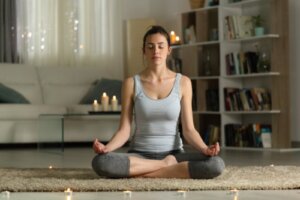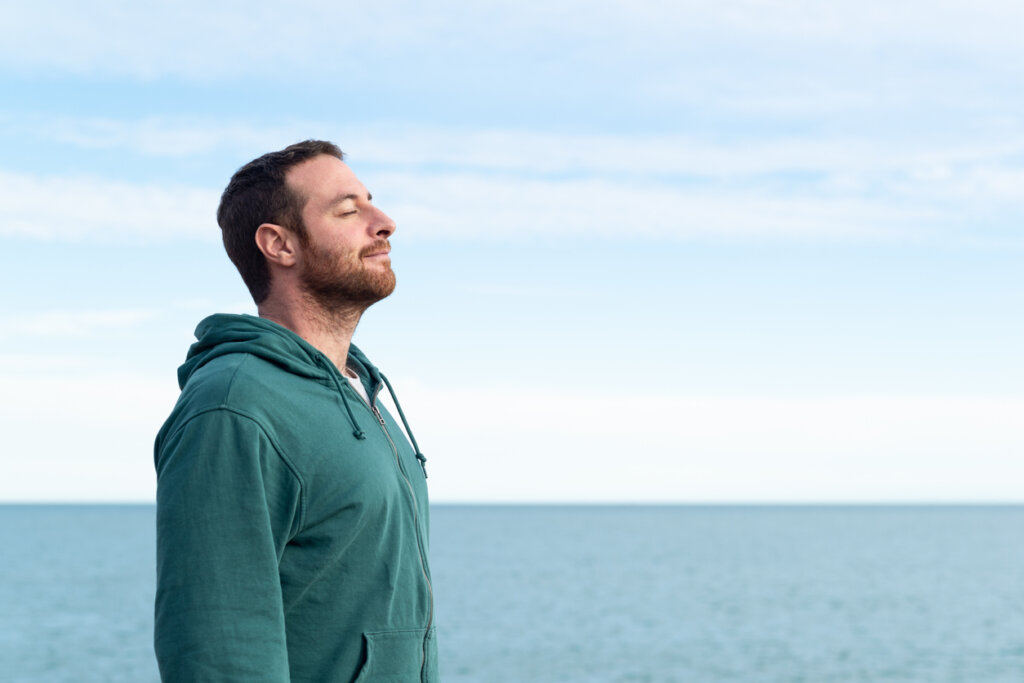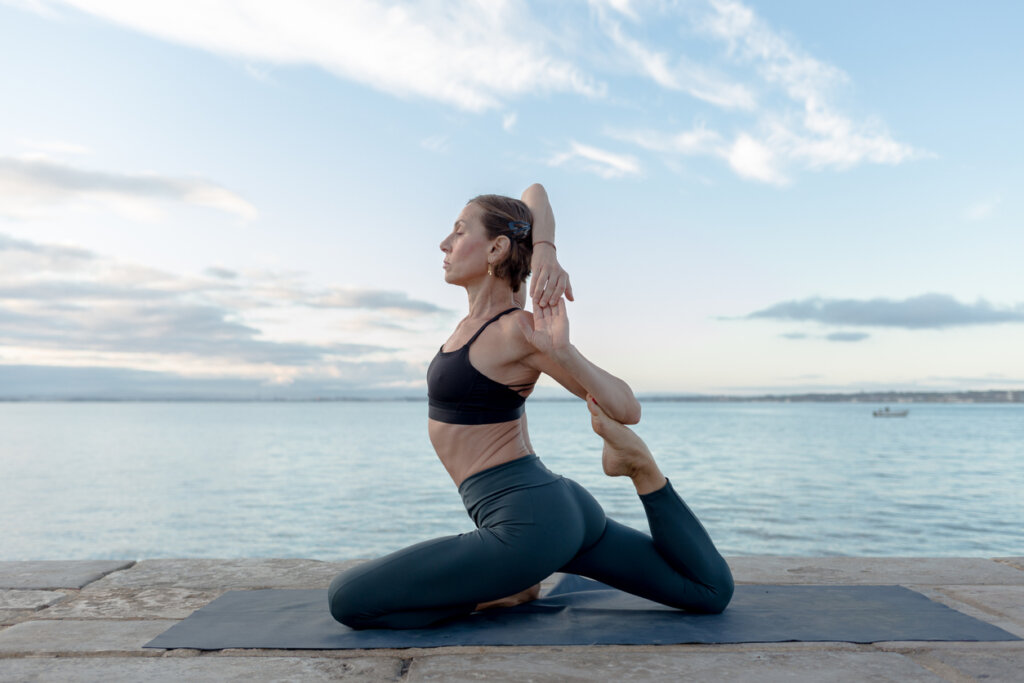How to Integrate Relaxation Techniques Into Your Daily Life

Today’s world is full of obligations and worries that can cloud your mind and make stress and anxiety take over your life. But, learning and employing daily relaxation techniques can have a positive impact on your mood. In this article, we’re going to suggest some of the most effective kinds that you can integrate into your daily routine.
Carrying a heavy load of responsibility often results in a really busy and stressful life. This can have negative effects on your physical and emotional well-being. However, being aware of the importance of relaxation in everyday life can help you relieve your feelings of stress and improve your quality of life.
Relaxation techniques
By carrying out certain relaxation techniques, you’ll see significant changes in your well-being. In addition to taking care of your diet and getting enough physical exercise as well as rest, it’ll be useful to include some relaxation techniques in your daily routine. They’ll help you live in the present and clear your mind of intrusive thoughts.
These are some of the most recommended.
1. Deep breathing

Deep breathing is a simple but effective relaxation technique that can be used anytime, and anywhere. It involves inhaling slowly and deeply through the nose, filling your lungs with air, and then slowly exhaling through your mouth. Repeat the exercise several times to achieve the best results.
Research suggests that this breathing technique is capable of improving mood and reducing stress levels. So, every day after waking up or before going to sleep, in fact, at any time, take the time to focus on your breathing and feel the sensations that flood through your body.
2. Meditation exercises
Meditation is a practice that’s been used for centuries for improving concentration, reducing anxiety, and increasing feelings of well-being. It involves sitting quietly and concentrating on your breathing or on a specific object, such as a candle or a mental image. This practice improves your overall health and reduces symptoms of anxiety and depression.
Meditation exercises promote relaxation because they allow you to focus on the present, instead of worrying about the future or regretting the past. By focusing on your breathing or an object, you’re training your mind to be aware of the present moment. This can reduce your anxiety and any negative thoughts.
3. Yoga poses
Yoga is a physical and mental practice that’s become really popular in recent years. It consists of physical postures, breathing, and meditation. Yoga practice has been shown to reduce anxiety, improve sleep quality, increase flexibility and muscle strength, and sharpen balance and coordination.
There are a variety of yoga poses for channeling energy. They range from easy to complex, but all emphasize slow, deep breathing, which can reduce your heart rate and lower your blood pressure. In addition, yoga encourages the release of muscle tension and stimulates the circulation. This helps reduce levels of cortisol, the stress hormone.

How to integrate relaxation into your everyday life
Living a stressful life can have a negative impact on your mental and physical health. In fact, it not only affects your work or academic performance but also your personal relationships and quality of life. By integrating relaxation into your daily routine, you can learn to manage stress and reduce its negative effects.
Some helpful tips
- Set aside time for relaxation. It’s crucial to make relaxation an important part of your day by scheduling time for it. It can be early in the morning, at the end of the day, or during a break at work.
- Create a calm environment. Find a serene place where you can relax without distractions. Make sure that it’s comfortable and pleasant.
- Use breathing techniques. Practice slow, deep breaths to calm your mind and reduce stress anywhere and at any time of the day.
- Try meditation. To integrate this practice into your routine, start with short meditations of a few minutes a day. Find a comfortable position and stay focused on your breathing or on a specific object.
- Exercise regularly. Physical activity helps reduce stress and anxiety. So, make sure you set aside several times a week to exercise.
- Reduce your use of technology. Take time to disconnect from technology and do things you enjoy. For example, reading a book, listening to music, or hanging out with your friends and family. Turn off your phone and computer, and allow your mind to rest.
Give prominence to relaxation in your everyday life
Relaxation is an easy and accessible way of improving your well-being since you can do it anytime and anywhere. Indeed, by integrating the above techniques and tips into your daily routine, you can improve your mental and physical health, and live a more balanced and satisfying life. So, make sure you take the time to breathe and connect with the here and now every day.
All cited sources were thoroughly reviewed by our team to ensure their quality, reliability, currency, and validity. The bibliography of this article was considered reliable and of academic or scientific accuracy.
- Goyal M, Singh S, Sibinga EM, Gould NF, Rowland-Seymour A, Sharma R, Berger Z, Sleicher D, Maron DD, Shihab HM, Ranasinghe PD, Linn S, Saha S, Bass EB, Haythornthwaite JA. (2014). Meditation programs for psychological stress and well-being: a systematic review and meta-analysis. JAMA Intern Med. 2014 Mar;174(3):357-68. doi: 10.1001/jamainternmed.2013.13018. PMID: 24395196; PMCID: PMC4142584.
- Lemay V, Hoolahan J, Buchanan A. (2019). Impact of a Yoga and Meditation Intervention on Students’ Stress and Anxiety Levels. Am J Pharm Educ. 2019 Jun;83(5):7001. doi: 10.5688/ajpe7001. PMID: 31333265; PMCID: PMC6630857.
- Perciavalle V, Blandini M, Fecarotta P, Buscemi A, Di Corrado D, Bertolo L, Fichera F, Coco M. (2017). The role of deep breathing on stress. Neurol Sci. 2017 Mar;38(3):451-458. doi: 10.1007/s10072-016-2790-8. Epub 2016 Dec 19. PMID: 27995346.
- Tang YY, Hölzel BK, Posner MI. (2015). The neuroscience of mindfulness meditation. Nat Rev Neurosci. 2015 Apr;16(4):213-25. doi: 10.1038/nrn3916. Epub 2015 Mar 18. PMID: 25783612.
This text is provided for informational purposes only and does not replace consultation with a professional. If in doubt, consult your specialist.








